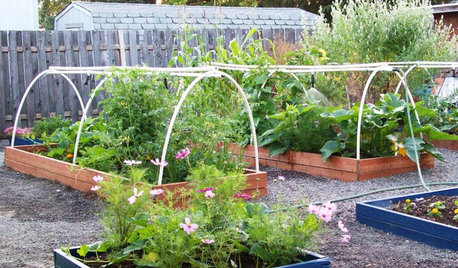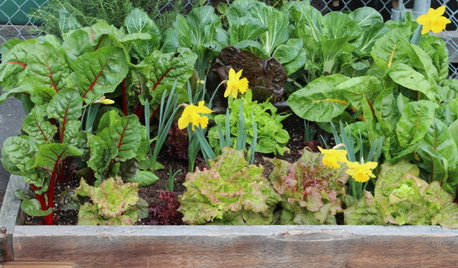Broccoli & aphids, tomatoes, onions my
Pamchesbay
10 years ago
Related Stories

EDIBLE GARDENSSummer Crops: How to Grow Tomatoes
Plant tomato seedlings in spring for one of the best tastes of summer, fresh from your backyard
Full Story
LIFEKitchen Traditions: Tomato Season Meets a Family Legacy
Somewhere a Sicilian great-great-grandmother is smiling at a bowl of American-made sauce
Full Story
FARM YOUR YARDHouzz Call: Home Farmers, Show Us Your Edible Gardens
We want to see where your tomatoes, summer squashes and beautiful berries are growing this summer
Full Story
FARM YOUR YARD6 Things to Know Before You Start Growing Your Own Food
It takes time and practice, but growing edibles in the suburbs or city is possible with smart prep and patience
Full Story
EDIBLE GARDENSGarden BFFs? Why Your Vegetables Are Begging for Companion Plants
Foster friendships among plants for protection from pests, pollination support and color camaraderie
Full Story
EDIBLE GARDENSHouzz Call: What Did You Grow This Summer?
Let’s celebrate the homegrown fruits and vegetables of the season. Post your pictures and tell us about your harvest
Full Story
GARDENING AND LANDSCAPINGWorld of Design: 10 Home Gardeners Show Us Their Sweet Summer Harvests
From New York to Tokyo, these gardeners have turned their yards, terraces and rooftops into places of bounty
Full Story
BENEFICIAL INSECTSAttract Pollinators for a Productive Edible Garden
You can lure bees, butterflies and birds into your yard with the right flowers and nesting spots
Full Story
GARDENING GUIDES10 Easy Edibles for First-Time Gardeners
Focus on these beginner-friendly vegetables, herbs, beans and salad greens to start a home farm with little fuss
Full Story
FARM YOUR YARDGrow a Kitchen Garden in 16 Square Feet
Got a sunny 4-by-4 space? You can make meals more interesting with your own vegetables and herbs
Full StoryMore Discussions







Okiedawn OK Zone 7
PamchesbayOriginal Author
Related Professionals
Allentown Landscape Architects & Landscape Designers · Brentwood Landscape Architects & Landscape Designers · Mitchellville Landscape Architects & Landscape Designers · Tomball Landscape Architects & Landscape Designers · Maple Heights Landscape Architects & Landscape Designers · Boca Raton Landscape Contractors · Costa Mesa Landscape Contractors · Farmington Landscape Contractors · Setauket-East Setauket Landscape Contractors · Sun City Center Landscape Contractors · Tigard Landscape Contractors · Dedham Decks, Patios & Outdoor Enclosures · Fort Lee Decks, Patios & Outdoor Enclosures · High Point Decks, Patios & Outdoor Enclosures · Miami Decks, Patios & Outdoor EnclosuresOkiedawn OK Zone 7
PamchesbayOriginal Author
PamchesbayOriginal Author